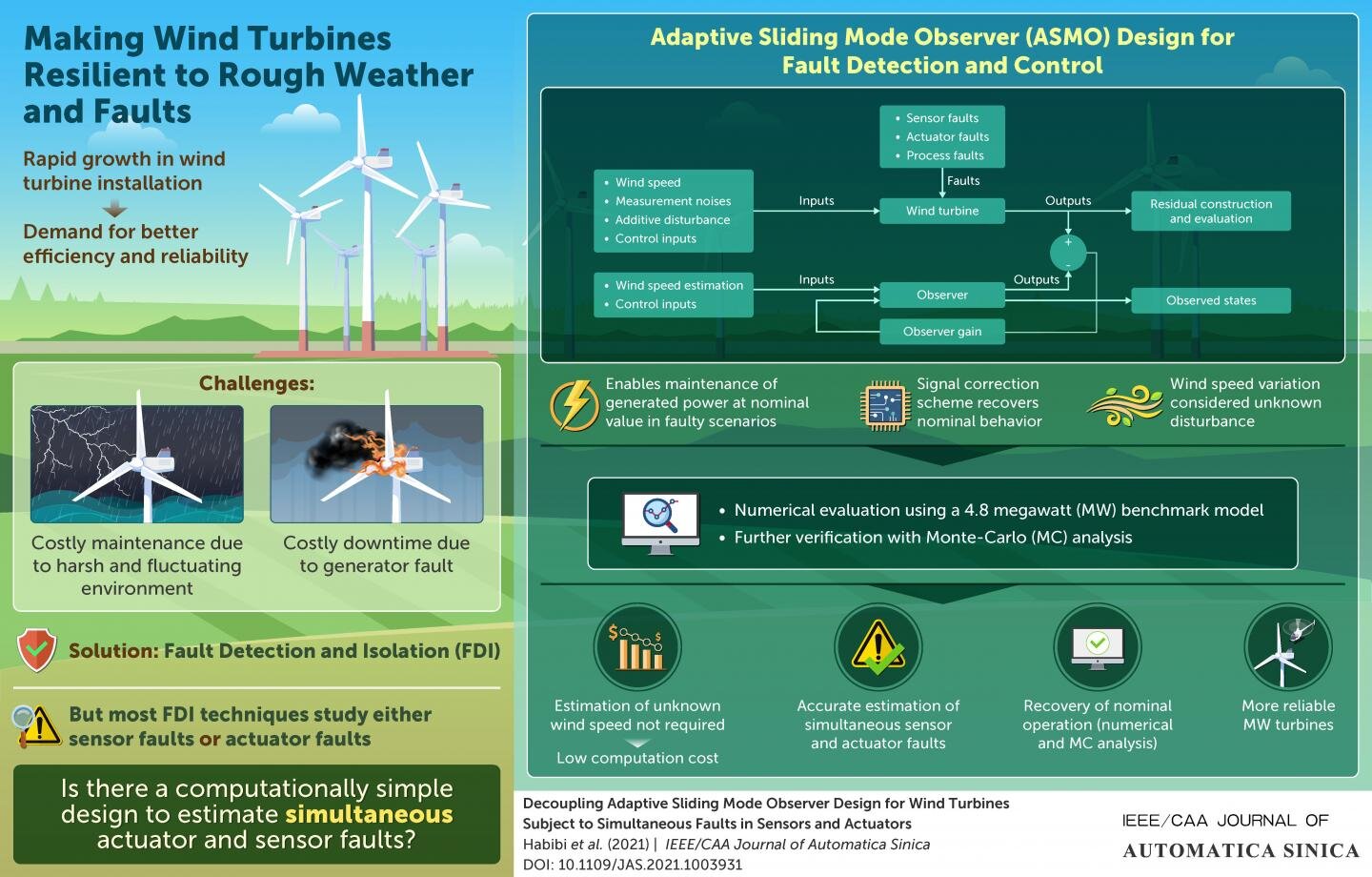
Getting ‘wind’ of the future: Making wind turbines low-maintenance and more resilient

A key driver of energy research is the ever-growing demand for energy. Traditional fossil-fuel-based energy sources currently meet these demands and do it well, but they’re non-renewable and cause major environmental pollution. In a world with looming climate and resource crisis threats, researchers have turned to renewable sources of energy as sustainable alternatives. Among renewables, wind energy, in particular, has gained considerable attention due to its low cost. As Dr. Afef Fekih, Computer Engineer at the University of Louisiana, U.S., with a specialization in wind turbine design, notes, “Wind energy has been described as ‘the world’s fastest-growing renewable energy source,’ seeing a 30% annual growth on average over the last two decades.”
But with the number of wind farms increasing worldwide, there has been a commensurate growth in the need for their improved reliability. This partly has to do with the fact that ideal habitats for wind farms can sometimes be in remote offshore areas that are characterized by rough weather and uncertain winds. Under such conditions, wind turbines become prone to faults, which lead to greater downtimes and lower amounts of generated power. Furthermore, the consequent increased maintenance needs only serve to make the generated energy costlier.
In a new study published in the IEEE/CAA Journal of Automatica Sinica, Dr. Fekih and her colleagues from Curtin University, Australia, and University of Ferrara, Italy, address these issues using an approach called fault-tolerant control (FTC)—a set of techniques that prevent simple faults from becoming serious failures. “FTCs can maintain satisfactory performance under faulty conditions using either passive approaches or active ones, such as online fault detection and isolation (FDI), which capture fault information and use it to optimize maintenance via remote diagnosis,” explains Dr. Fekih.
The team applied FDI. They realized that previous studies exploring FDI focus on faults either in the pitch actuator (an independent safety brake for the turbine) or in the speed sensor, but not both. Yet, the reality remains that simultaneous faults can and are likely to occur in both. To enhance a turbine’s performance and efficiency, a method to compensate for such simultaneous faults could be key. Thus, they set out to develop a computationally simple scheme for the simultaneous detection of sensor and actuator faults, while doing away with any redundant hardware components.
To achieve this, they adopted an approach called “the principle of separation”, where they designed and implemented on a computer a “state observer” model—a system that is essentially a duplicate of the original system. They then provided similar inputs to the observer and the turbine, and by noting discrepancies between the model and the observer, were able to detect system faults in real time. Based on the detection, one can implement a signal correction scheme to ensure that the system keeps operating with the desired efficiency.
In this approach, all wind variations are considered as unknown disturbances, which eliminates the need for their accurate measurement or estimation, thereby reducing computational complexity, and in turn, cost.
When the team evaluated their scheme numerically on a 4.8-megawatt benchmark wind turbine model and backed it up with Monte Carlo analysis it proved reliable and robust. The desired operation could be maintained despite simultaneous faults and unknown wind speeds.
Inspired by their findings, Dr. Fekih envisions a future governed by wind energy. “By helping realize an economically feasible wind turbine power plant as a renewable energy source with zero carbon footprint, we will be able to respond to the increasing power demand in a sustainable and environment-friendly way,” she says.
It is indeed exciting to get ‘wind’ of such a future.
Wake steering potentially boosts energy production at US wind plants
Hamed Habibi et al, Decoupling Adaptive Sliding Mode Observer Design for Wind Turbines Subject to Simultaneous Faults in Sensors and Actuators, IEEE/CAA Journal of Automatica Sinica (2021). DOI: 10.1109/JAS.2021.1003931
Provided by
Chinese Association of Automation
Citation:
Getting ‘wind’ of the future: Making wind turbines low-maintenance and more resilient (2021, May 19)
retrieved 19 May 2021
from https://techxplore.com/news/2021-05-future-turbines-low-maintenance-resilient.html
This document is subject to copyright. Apart from any fair dealing for the purpose of private study or research, no
part may be reproduced without the written permission. The content is provided for information purposes only.
Stay connected with us on social media platform for instant update click here to join our Twitter, & Facebook
We are now on Telegram. Click here to join our channel (@TechiUpdate) and stay updated with the latest Technology headlines.
For all the latest Technology News Click Here
For the latest news and updates, follow us on Google News.

